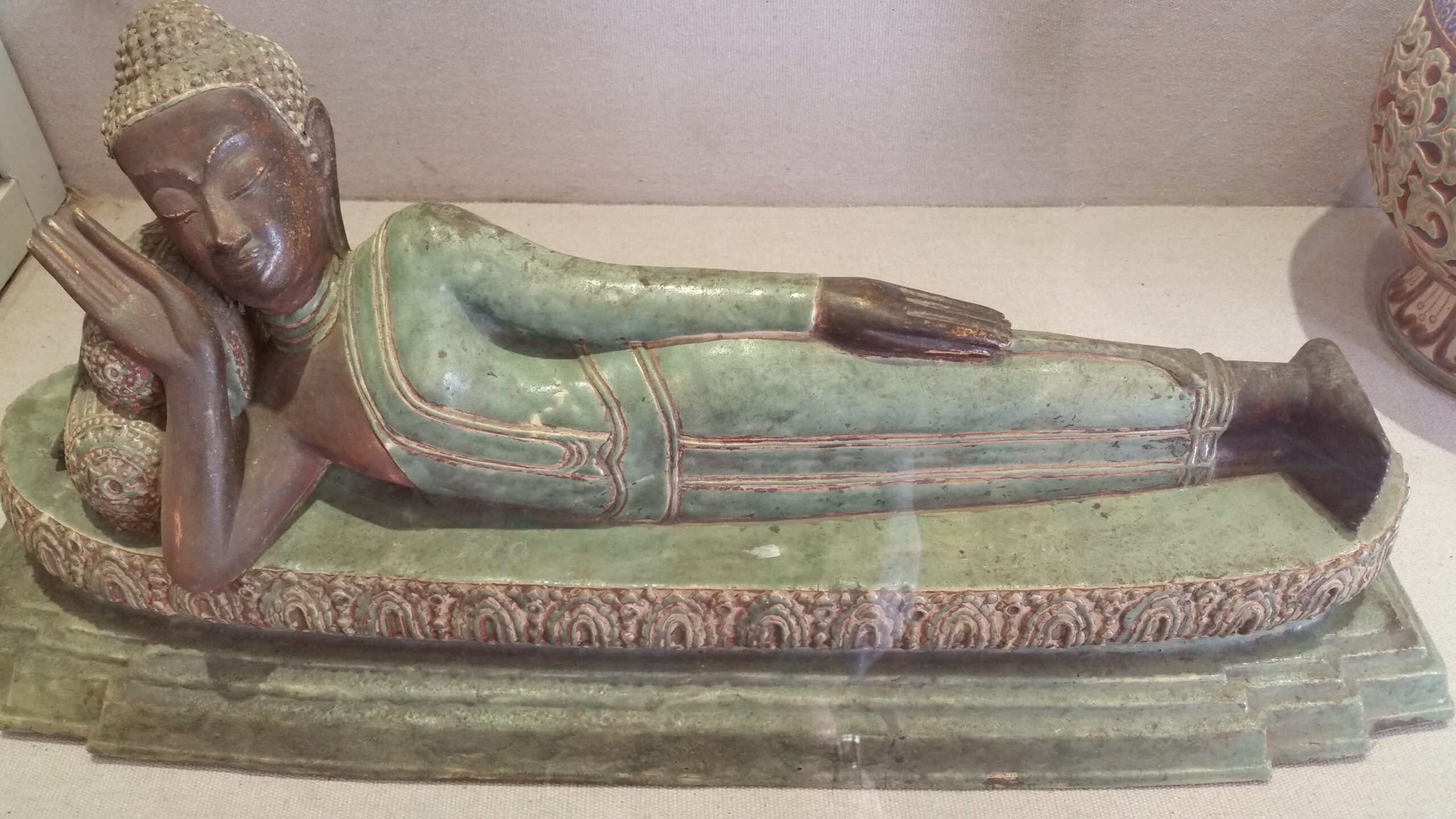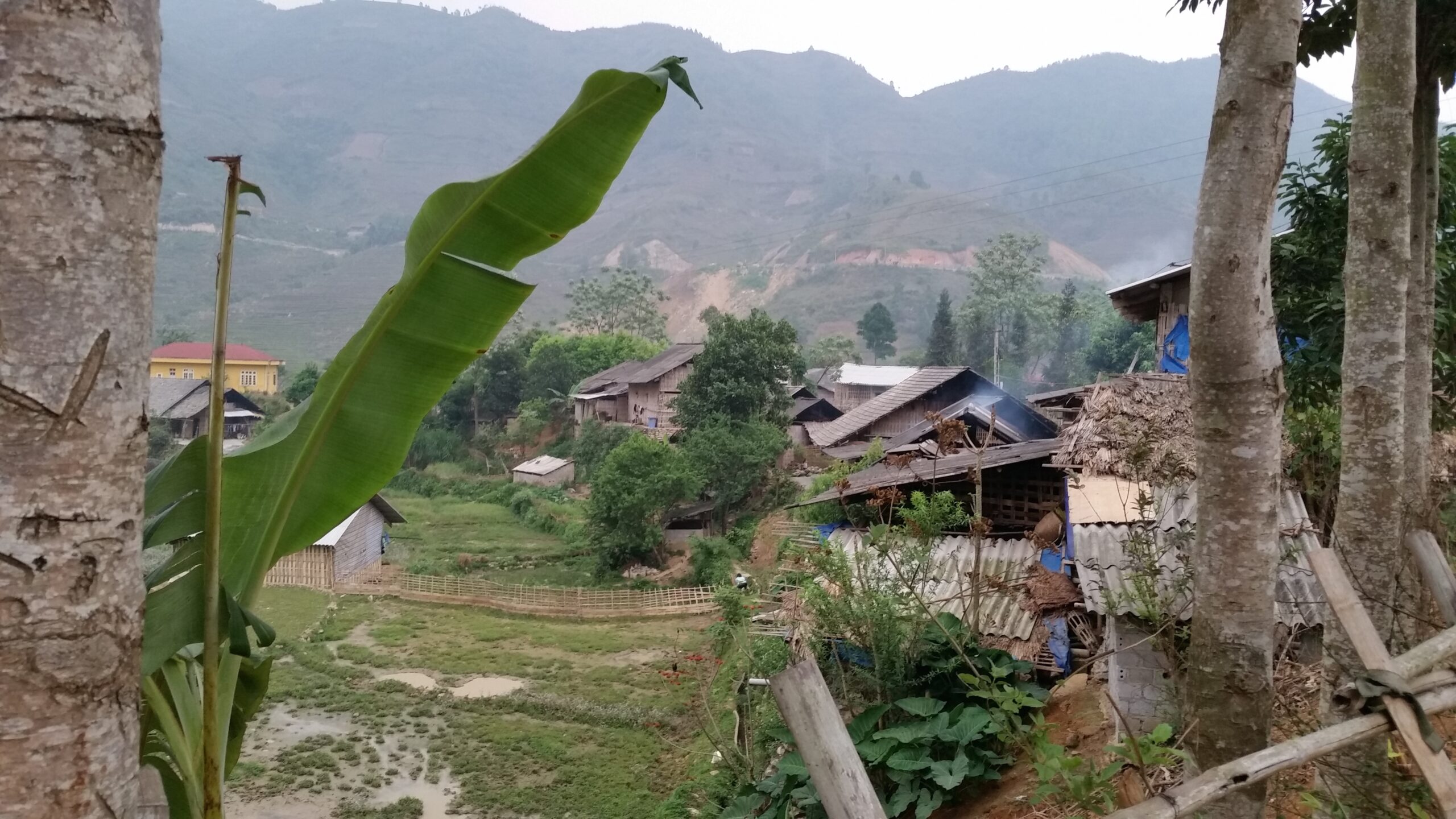Just to note, we are in the city of Cochin, state of Kerala. Specifically, we are staying in Fort Cochin, the ancient port town. It is tropical, no high rises, easy to walk, lots of Palm trees, lots to see. We’ve switched to Indian breakfasts now. Pineapple lassies, rotti and dal, aka pineapple yogurt drink, rice pancake and lentils. Saj’s older daughter brings out breakfast and makes sure we are happy and full. Saj is around to make sure we are happy and set for the day.
Some chai masala tea and we’re ready to go. Today was a walking tour of the town. Our guide, Rajesh, is from Kerala and we liked him immediately. We started out at a church turned museum. We stopped on the grounds first and Rajesh shared his love and knowledge of the local trees and plants—tamarind, coconut, mango, guava, papaya trees and varieties of bananas, among others.
The museum displayed religious relics from centuries of churches, first Portuguese in 1503, then Dutch, 150 years later, eventually British in 1795 nail independence in 1947. There was also a secular section mapping the old city and how it developed. My favorite was a brass door fastener that included symbols representing Christians, Hindus, Jews, Muslims and Chinese, the idea being all are welcome. As we walked through the town, we got a history lesson and gained an understanding of the demographics—45% Hindu, about 20% Christian, the largest in India, about 20% Moslem, then everyone else. There is 97% literacy rate, highest in India.
A day or so ago, I mentioned the photo with foreigners trend, well, it peaked today in the St Francis Church. The Indian tradition of removing shoes when entering a Hindi temple extends to all religious places. So we took off our shoes and went in. We sat down and Rajesh told us about Vasco da Gama. When he finished an Indian woman asked if she could take a picture of me with her relative. That started a trend, about 10 photos later, we begged off and fled. Ronni has a few of the pics. We just had to document it. Somewhere in India, people are looking at Picts of themselves with the white lady in Indian clothes. Back to Vasco da Gama, he was buried there after dying of malaria. Seems the Indians were not unhappy about that, he was especially brutal to them. His body was later moved to Lisbon, I would have seen where it had been, but I was busy posing!
As I said, the buildings are low rise. Most were built during colonization, so very European. It’s a tourist haven for everyone, Indian and European mostly. For those of you who know your hotel chains (mom and Karen) my two favorites are represented here, Small Luxury Hotels of The World, and Relaix et Chateau.
Later, we walked along the promenade next to the Arabian Sea. There are fish stands where you pick out your fish, take it over to an outdoor grill and have it cooked for you. We are hoping to do that one night. After a chai, we headed back for a break.
We ended our day with a private cooking class at Fort Paradise Garden Cafe. Ronni and I made our way over to an old Dutch house in Fort Cochin, about 4 blocks from our place. We made our way upstairs and found ourselves in Maria’s kitchen. We sat down with her, planned our menu and she taught us the template for Kerala cooking. So we learned the basic principles for any veg or meet dish, what spices and herbs to use, the properties of each and the respective cooking methods.
Maria did all the prep (chopping) ahead of time, so that we could focus on the information. Eventually, Pinchas joined us and we sat down to a great dinner of veg. curry, beets, cabbage, and coconut chutney. Before leaving, Maria, seeing Pinchas wearing a kippah, asked if we were Jewish. She is Roman Catholic, but told us that her great great-grandmother on her father’s side was a black Jew (Indian Jews from Ernakulam).


